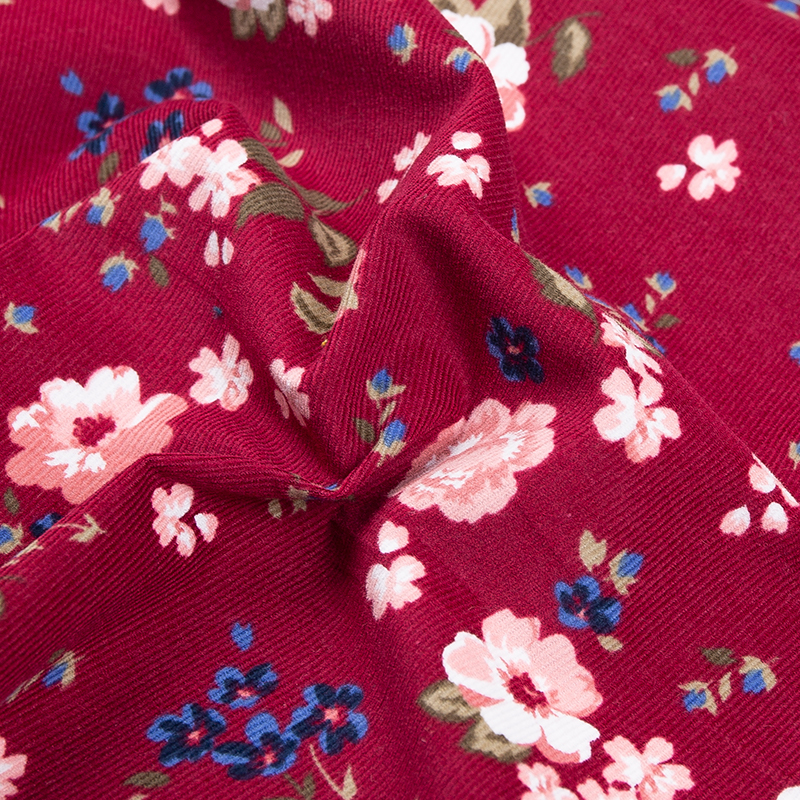Corduroy fabric, with its distinctive texture and warm, plush feel, has been a staple in both fashion and home décor for centuries. Traditionally made from 100% cotton, corduroy is recognized for its unique longitudinal pile, which forms the characteristic ridges or “wales” that give the fabric its soft and durable nature. The fabric’s inherent warmth, softness, and durability make it ideal for autumn and winter apparel, as well as for a variety of home furnishings like upholstery and curtains. However, as fashion and technology evolve, corduroy is increasingly blended with other fibers to enhance its properties and adapt to different uses.
Blending corduroy with synthetic fibers such as polyester or acrylic can significantly alter its performance and characteristics. Polyester blends can improve the fabric’s resilience, reducing its tendency to wrinkle and making it more resistant to fading and shrinking. This enhances the longevity of corduroy garments and upholstery, which is particularly beneficial in high-traffic areas or for everyday wear. Acrylic blends can offer similar advantages, often providing a softer feel and increased resistance to wear and tear. These synthetic fibers also contribute to cost-effectiveness, as they can be more affordable than pure cotton and may reduce the overall production costs.

Blending with spandex or elastane is another popular modification, especially in fashion applications. The addition of these stretch fibers allows the corduroy to have more flexibility and elasticity, making it more comfortable and better fitting for garments such as pants or jackets. This blend improves the fabric's ability to retain its shape and provides greater freedom of movement, which is highly desirable for activewear or casual clothing. However, while these blends offer enhanced performance and comfort, they can sometimes detract from the traditional aesthetic of corduroy, which is valued for its classic, textured appearance.
Despite these advantages, there are also notable disadvantages to blending Corduroy fabric with other fibers. One potential downside is that blending can sometimes compromise the distinctive texture and appearance that defines classic corduroy. The unique ridges and soft feel might be less pronounced in blends, especially if the percentage of synthetic fibers is high. Additionally, the incorporation of synthetics can affect the fabric’s breathability and natural moisture absorption properties, which are inherent to 100% cotton corduroy. This might lead to less comfort in warmer conditions or reduced ability to wick away moisture.
In summary, blending corduroy with other fibers brings several benefits, such as enhanced durability, reduced maintenance, and increased comfort through added stretch. These modifications make corduroy more versatile and suited to a wider range of applications, from fashion to home décor. However, these blends can also dilute some of the traditional qualities that make corduroy unique, such as its classic texture and natural breathability. Balancing these advantages and disadvantages is key when selecting corduroy for specific uses, ensuring that the fabric meets both functional and aesthetic requirements.



 English
English Español
Español Aug 22,2024
Aug 22,2024














 +86-519-86503571
+86-519-86503571
 Phone: +86-13218666905
Phone: +86-13218666905 Tel: +86-0519-86503571
Tel: +86-0519-86503571 Fax: +86-0519-86508551
Fax: +86-0519-86508551 E-mail:
E-mail: 